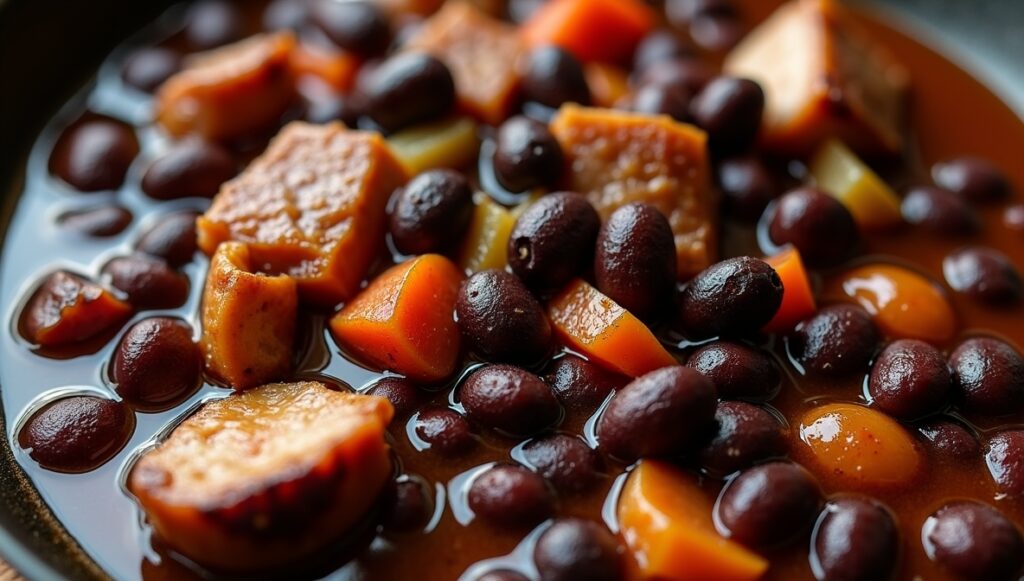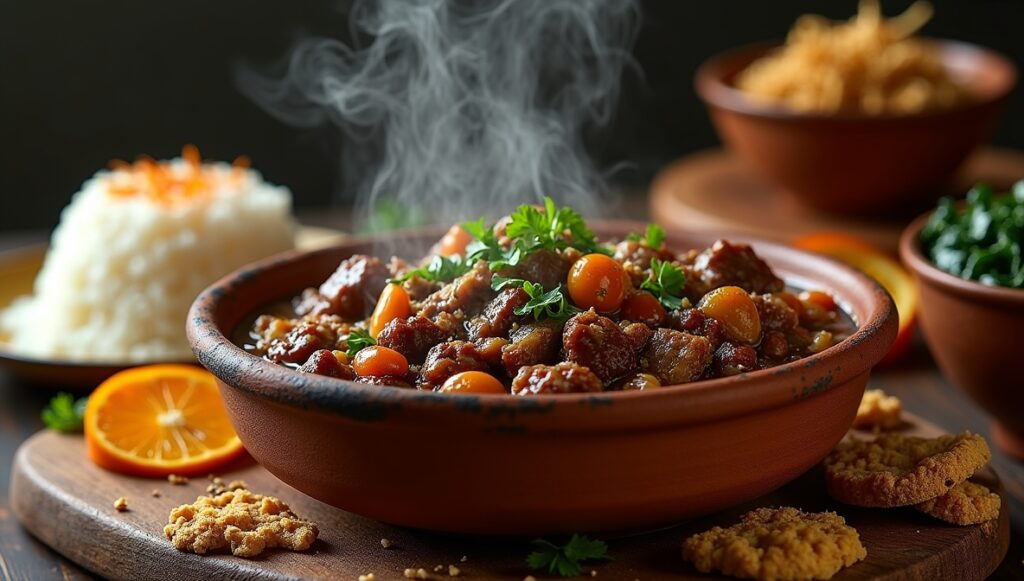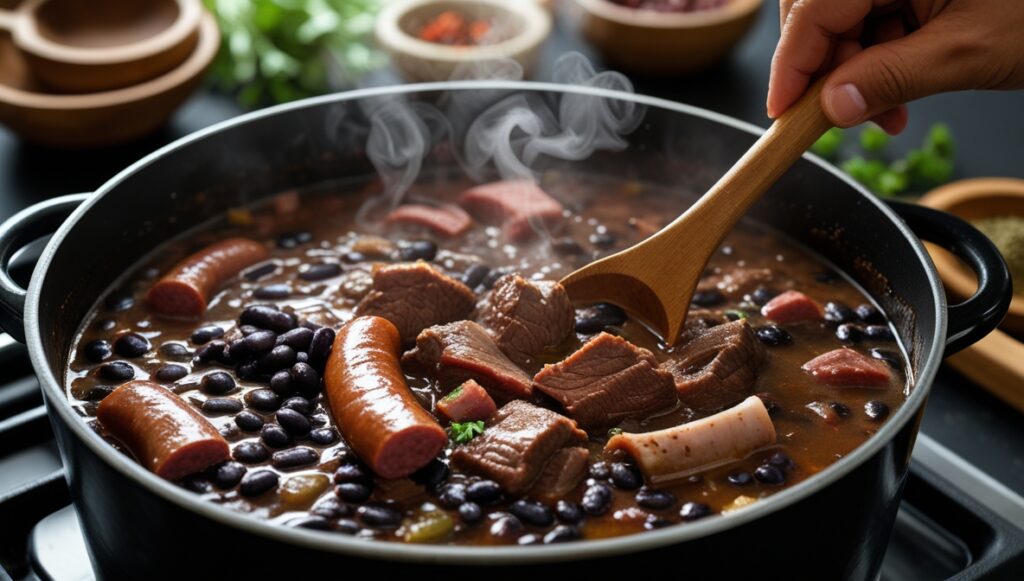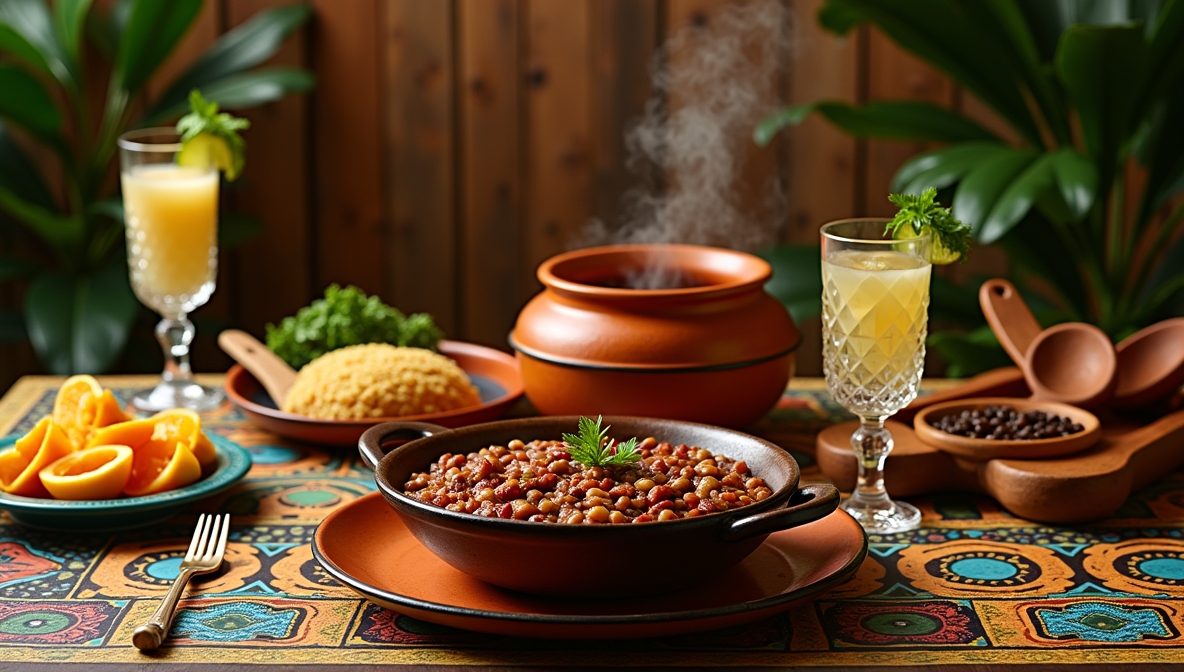Introduction
Feijoada is one of Brazil’s most cherished and iconic dishes, often considered the country’s national dish. This hearty black bean stew is packed with flavorful cuts of pork and beef, simmered to perfection with spices and herbs. Traditionally served with rice, collard greens, and orange slices, Feijoada is a beloved meal enjoyed at family gatherings, celebrations, and casual weekend lunches across Brazil. Its unique combination of flavors and rich cultural significance makes it a must-try for food lovers worldwide.


History & Cultural Significance
Feijoada has a deep-rooted history that dates back to colonial Brazil. While some believe it was influenced by European stews brought by Portuguese settlers, others associate its origins with African slaves who used leftover meat scraps and black beans to create a nourishing meal. Over time, Feijoada evolved into a national dish, gaining prominence in Brazilian culture. Today, it is commonly served on Wednesdays and Saturdays in restaurants across Brazil and is a staple dish during festivals, especially Carnival.
Ingredients & Regional Variations
Key Ingredients:
Black beans (feijão preto)
Pork cuts (ribs, sausages, bacon, and trotters)
Beef cuts (jerky, tail, or tongue)
Garlic, onions, and bay leaves
Orange zest (optional, for balance)
Rice, collard greens, and farofa (toasted cassava flour) as sides
Regional Variations:
São Paulo Style: Often includes additional beef cuts and is served with fried bananas.
Rio de Janeiro Style: The most traditional version, focusing on a balanced mix of pork and beef cuts.
Bahia Style: Sometimes features African influences with added coconut milk or palm oil.
Vegetarian Feijoada: A modern adaptation replacing meats with smoked tofu, mushrooms, and plant-based sausages.
Cooking Process & Difficulty Level

Feijoada is a slow-cooked dish that requires patience but is not overly difficult to prepare. It is beginner-friendly if prepared with simple ingredients, though mastering the rich depth of flavor takes practice.
Basic Cooking Steps:
-
Soak the black beans overnight.
-
Cook the meats separately to remove excess fat.
-
Sauté onions and garlic, then add beans, meats, and bay leaves.
-
Simmer for 2–3 hours until flavors meld and meat is tender.
-
Serve with rice, greens, farofa, and orange slices for a complete meal.
Best Places to Try It in Brazil
-
Casa da Feijoada (Rio de Janeiro) – One of the most famous restaurants dedicated to Feijoada.
-
Bar do Mineiro (Rio de Janeiro) – A cozy spot known for its authentic and flavorful Feijoada.
-
Bolinha (São Paulo) – Serves a luxurious version with premium cuts of meat.
-
Restaurante Mocotó (São Paulo) – A Michelin-recognized eatery with an innovative take on Feijoada.
Pairing with Drinks & Side Dishes
Best Drinks:
-
Caipirinha – Brazil’s signature cocktail made with cachaça, lime, and sugar.
-
Guaraná Soda – A sweet, fruity soft drink that complements the dish’s richness.
-
Red Wine – A bold Malbec or Syrah enhances Feijoada’s meaty flavors.
Side Dishes:
-
Rice – A neutral base to absorb the flavors.
-
Collard Greens (Couve) – Adds freshness and balance.
-
Farofa – Toasted cassava flour mixture for texture.
-
Orange Slices – Helps cut through the richness of the dish.
Fun Facts & Lesser-Known Trivia
-
Feijoada is traditionally eaten on Wednesdays and Saturdays in many Brazilian households.
-
The word “Feijoada” comes from “feijão,” meaning beans in Portuguese.
-
Some Brazilian football teams have Feijoada-themed celebrations before important matches.
-
Many samba schools serve Feijoada during their pre-Carnival festivities.
Health Benefits & Nutrition
Feijoada is protein-rich due to its mix of beans and meats, making it an excellent source of energy. Black beans provide fiber and essential nutrients, while pork and beef contribute iron and B vitamins. However, due to its high fat content, moderation is recommended. Lighter versions with lean meats or plant-based alternatives are available for healthier options.
How to Cook It at Home (Simple Recipe)
Ingredients:
-
2 cups black beans
-
1 lb pork ribs
-
1 lb sausage (chorizo or linguiça)
-
1 lb beef jerky (optional)
-
1 onion, chopped
-
4 garlic cloves, minced
-
2 bay leaves
-
Salt & pepper to taste
-
1 orange (zest & slices for serving)
Instructions:
-
Soak black beans overnight.
-
In a large pot, sauté onion and garlic.
-
Add beans, meats, bay leaves, and water.
-
Simmer for 2–3 hours until meat is tender.
-
Serve with rice, greens, farofa, and orange slices.
Global Influence & Fusion Cuisine
Feijoada has inspired adaptations worldwide, particularly in Portugal, Cape Verde, and Mozambique, where variations exist. In the U.S., Brazilian steakhouses (churrascarias) serve Feijoada as a popular buffet dish. Some modern chefs experiment with plant-based Feijoada or gourmet versions using truffle-infused farofa.
Comparison with Similar Dishes
-
French Cassoulet – A slow-cooked white bean stew with meats, similar in heartiness.
-
Spanish Fabada Asturiana – A pork and bean stew from Asturias, Spain.
-
American Southern Red Beans & Rice – Shares similarities in slow-cooking technique and comfort food appeal.

